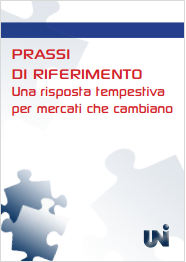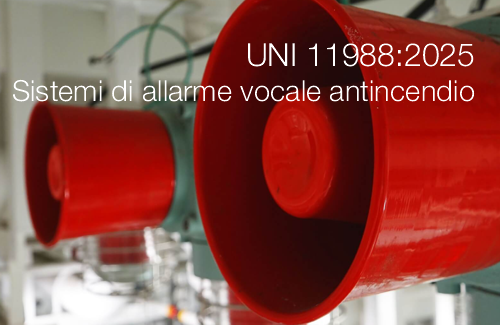UNI: Le prassi di riferimento

UNI: Le Prassi di Riferimento / Elenco Update 10.12.2023
ID 3503 | Update 10.12.2023 / Documento allegato
L’idea di definire nel sistema UNI una forma di documento para-normativo nazionale nasce dalle ...
UNI CEI EN 17210:2021 accessibilità e usabilità dell'ambiente costruito - Requisiti funzionali
Recepisce: EN 17210:2021
Data entrata in vigore: 18 febbraio 2021
La norma descrive i requisiti minimi funzionali di base e le raccomandazioni per un ambiente costruito accessibile e usabile secondo l'approccio "Design for All"/"Universal Design" a favore di un utilizzo equo e sicuro per il maggior numero di utenti, incluse le persone con disabilità.
Errata corrige : EC 1-2021 UNI EN 17210:2021 - EC 2-2021 UNI EN 17210:2021
_____
In allegato Preview EN 17210:2021
EN 17210:2021 Accessibility and usability of the built environment - Functional requirements
1 Scope
This document describes basic, minimum functional requirements and recommendations for an accessible and usable built environment, following "Design for All"/"Universal Design" principles which will facilitate equitable and safe use for a wide range of users, including persons with disabilities.
The requirements and recommendations given in this document are applicable across the full spectrum of the built environment.
These functional accessibility and usability requirements and recommendations are relevant to the design, construction, refurbishment or adaptation, and maintenance of built environments including outdoor pedestrian and urban areas.
NOTE 1 ‘Design for All’ and ‘Universal Design’ share a similar inclusive design philosophy. “Universal Design” means the design of products, environments, programmes and services to be usable by all people, to the greatest extent possible, without the need for adaptation or specialized design. “Universal Design” does not exclude assistive devices for particular groups of persons with disabilities where this is needed.
NOTE 2 Terms such as "design for all", "universal design", "accessible design", "barrier-free design", "inclusive design" and "transgenerational design" are often used interchangeably with the same meaning.
NOTE 3 This document does not cover management and maintenance issues, but provides basic information in Annex B.
NOTE 4 All figures are provided as examples. They are described by their title and key and do not provide additional information. Some figures show negative examples to be avoided; these are identified by the insertion of a red cross on them. A list of all the figures included is this document is given in the informative Annex C.
NOTE 5 In the case of refurbishment or adaptations of existing buildings or infrastructures, a specific study including feasibility determines the extent to which the functional requirements and recommendations can be met.
...
Fonte: UNI/EVS

ID 3503 | Update 10.12.2023 / Documento allegato
L’idea di definire nel sistema UNI una forma di documento para-normativo nazionale nasce dalle ...

ID 24637 | 25.09.2025 / Preview in allegato
UNI 11988:2025
Progettazione, installazione, messa in servizio, manutenzione ed esercizio dei sistemi di...
Data: 2007-08
Classificazione CEI: 64-57;V1
Testata editoriale iscritta al n. 22/2024 del registro periodici della cancelleria del Tribunale di Perugia in data 19.11.2024